Posted by PuertoMadero in Uncategorized | 2 Comments
Las evidencias del desplazamiento del eje magnético: Las pistas de los aeropuertos tienen que cambiar su nomenclatura y balización para adaptarse al nuevo norte magnético.
APORTE DE HERMANA MARIA:
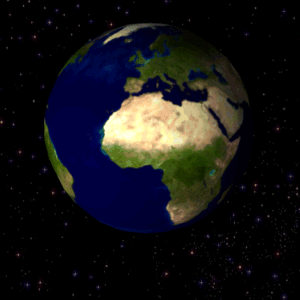
Desde hace dos años, tanto los navegantes, como los pilotos, controladores y
personal relacionado con , la aviación y la navegación, son
perfectamente conocedores del desplazamiento del eje magnético de la
Tierra. Hasta ahora, poco se ha hablado de este fenómeno, en los medios
de comunicación, pero lo cierto es que se conoce y se viene estudiando
por la comunidad científica. Remitimos a los artículos anteriores en los que hemos analizado con detalle el fenómeno del desplazamiento del eje magnético, y en
especial recomendamos la lectura de este enlace de selección en el que
facilitamos todos los artículos y documentación científica sobre el
tema, para aquellos que deseen profundizar sobre el fenómeno.
Lo que resulta curioso es comprobar cómo (por primera vez) un medio
de comunicación de gran alcance da por hecho el fenómeno y con fecha de
hoy 19 de septiembre, en el diario “el Economista” podemos leer:
Madrid,
19 sep (EFE).- Dos de las pistas utilizadas en el aeropuerto de Barajas
para las maniobras de despegue y aterrizaje cambian a partir de hoy de
nombre para adecuarse a los cambios producidos por el movimiento del
norte magnético.
En
un comunicado, AENA detalla que se trata de las pistas 15L/33R y
15R/33L, que pasarán a denominarse 14R/32L y 14L/32R, respectivamente.
El
ente público explica que estas pistas son las dos situadas “más al sur
del aeropuerto y se utilizan, habitualmente, para los aterrizaje” y
destaca que su adecuación conlleva la puesta en marcha de una serie de
actuaciones en el área de movimiento (la modificación de pintura en
pistas, carteles y señales) y cambios en sistemas de información, planos
o documentación. (Extracto procedente del diario Economista).
Y en efecto, recuerden que desde hace ya tiempo pueden contemplarse anomalías en la visualización de las fases de la Luna, que venimos comentando (Luna en forma de U ) , así como la relación existente entre objetos celestes y cambios orbitales por tránsito a lo largo de las Eras, como un fenómeno relacionado con el binarismo estelar de nuestro sistema Solar.
Vamos a profundizar aquí en un fenómeno cíclico: Las
fluctuaciones en el eje magnético implican incremento de la
Excentricidad de las órbitas alrededor del Sol.
Dicho de otra forma: Las series históricas demuestran que de forma
cíclica nuestro planeta, experimenta desplazamientos en el eje magnético
acompañados de excentricidad en las órbitas respecto del sol, lo que
propicia movimientos tectónicos, glaciaciones y calor excesivo en el
verano, cambios en las corrientes y comportmientos exóticos de
determinados seres vivos que para adaptarse a los cambios tienen que
migrar a nuevos hábitats siguiendo los patrones de las corrientes de
aire, agua y en casos muy sofisticados como los delfines y las ballenas,
las variaciones en las Resonancias Schumann.
El siguiente gráfico muestra la sucesión de series históricas
comprendiendo el desplazamiento del eje magnético y su relación con la
excentricidad de la rotación.
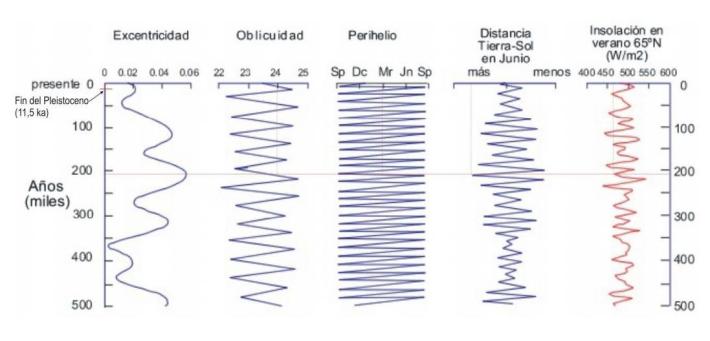
Como pueden observar la oblicuidad del eje de la Tierra ha variado
continuamente al menos en os últimos 500.000 años desde que se tiene
constancia, oscilando entre los 22º de Inclinación y los 25º de
inclinación. El efecto combinado de la reversión geomagnética con la
excentricidad de la órbita hace pensar en una correlación lógica que no
incide únicamente en el clima, sino también en la conformación de la
corteza terrestre y la actividad volcánica y sísmica, como ya sabemos.
Ver Martín-Chivelet,
J. 2003. Cambio Global durante el Holoceno: La evolución reciente del
Sistema Tierra. En: Nieto, L. y Castro, J.M. (eds.), IV Jornadas de
Geología Ambiental: Cambios recientes en el Sistema Tierra, Universidad
de Jaén.
El experimento es sencillo: si tomamos una peonza y forzamos
ligeramente su inclinación, observaremos como describe una
circunferencia de giro en traslación más excéntrica que cuando está
menos inclinada. La rotación más excéntrica implica mayor elipsoidal.
Ahora combinemos dos fuerzas que se compensan entre sí: Una
procedente del interior (La tierra actúa como un electroimán) generando
la Magnetosfera y otra procedente del exterior (El sol). Si dejáramos
el modelo así, ni habría desplazamientos magnéticos, ni desplazamientos
en la excentricidad, ya que ambas fuerzas serían compensadas, y en caso
de producirse un desequilibrio por un acidente sísmico o una tormenta
solar, la magnetosfera volvería a regular inmediatamente esa
descompensación con lo que la órbita de la Tierra no presentaría flujos
de excentricidad, y la peonza (La Tierra) no inclinaría su eje. Los
registros hubieran estado estables en los últimos 1000 millones de años,
momento en el que nuestra estrella estabilizó su núcleo y se
estabilizaron las órbitas de los planetas.
Las únicas razones que pueden hacer cambiar la órbita de la Tierra de
forma periódica desde que se tiene registros, es el hecho de que
alrededor del Sol orbite periódicamente otra estrella, que esa órbita
sea muy excéntrica, y que junto a este evento puedan existir otros tales
como estrellas de neutrones, enanas marrones próximas y/o agujero
negro.
Todos estos eventos ejercen como fuentes de tracción externa, pero el
hecho de que los registros históricos más antiguos de nuestra cultura
nos conduzcan a las glaciaciones de Riis y Würm, implica que existe algo
que perturba progresivamente las órbitas y desplaza los ejes
magnéticos, generando descompensaciones que oscilan desde 0,06 a 0 en la
órbita terrestre.
La incidencia combinada de todos estos eventos es lo que ha
conformado el peculiar Orto u Oort, así como colisiones en el pasado que
dieron orígen al cinturón de asteroides, la extraña órbita de Plutón y
el cinturón de Kuiper-Oort
Hasta aquí todo encaja perfectamente en el modelo, pero nos falta un
ingrediente importante: si todos estos cambios se producen en la órbita
de la Tierra, debería estar sucediendo lo mismo en el resto de los
planetas.
Lo cierto es que tenemos una forma muy sencilla de comprobarlo.
Bastaría tomar las secuencias sucesivas de tránsitos orbitales de los
planetas en el satélite LASCO. Obtendríamos así posiciones y
desplazamientos orbitales de los planetas a lo largo de las series
históricas sobre los que se tienen datos de observación.
Las órbitas de Júpiter ,Venus y Saturno son relevantes en los datos,
ya que son los tránsitos que LASCO presenta con mayor nitidez en las
series de datos.
Seguidamente les ofrecemos un detalle de los años completos del 2000 a
2012, un detalle completo de los tránsitos, anomalías, cometas y
actividad solar procedentes de os registros grabados sobre LASCO C3.
Observaciones:
1º.-Muchos frames han desaparecido y están empalmados faltando días e
incluso semanas. Dentro del día también falta el ensamblaje de algunas
horas lo que dificulta la visualización.
2º.-Junto a estas anomalías que detallamos, también se observan las
anomalías aetherofactales que ya hemos tratado ampliamente en otros
artículos anteriores.
HERMANOS EN ESTA PARTE VEAN SERIE DE VIDEOS EN EL LINK DE LA PAGINA.
Movimientos totales de órbitas comparando las series anteriores:
http://sungrazer.nrl.navy.mil/index.php?p=transits/transits_2007
http://sungrazer.nrl.navy.mil/index.php?p=transits/transits
Pueden verse todas las variaciones en elíptica de las órbitas y los
tránsitos de los planetas, lo que implica desplazamientos orbitales en
cada tránsito, desde que se tienen datos.
Y en efecto: Si recurrimos a bibliografía científica, esto es correcto y ha sido profundamente estudiado.
A.-Júpiter:
| 1. | Coupled Orbital and Thermal Evolution of Ganymede [PDF-529K]
Feb 2005 …IS975778 Coupled Orbital and Thermal Evolution…399–412) orbital model for the tidal…evolutionary paths were caused…and n are the orbitalsemimajor axis, eccentricity, and mean motion…primary’s (Jupiter) mass, G is the… |
||
| [http://www.lpl.arizona.edu/~showman/publications/showm…] | |||
2. |
Thermal-orbital evolution of Io and Europa
Hussmann, Hauke / Spohn, Tilman, Icarus, 171 (2), p.391-410, Oct 2004 doi:10.1016/j.icarus.2004.05.020 …Io gains orbital energy from the reservoir of Jupiter‘s rotational…tidal bulge on Jupiter. Part of…between Io and Jupiter tend to drive…square of the eccentricity and tends to…where the orbital elements and the… |
||
| Published journal article available from | |||
| similar results | |||
3. |
What do the orbital motions of the outer planets of the Solar System tell us about the Pioneer anomaly?
Iorio, Lorenzo / Giudice, Giuseppe, New Astronomy, 11 (8), p.600-607, Jul 2006 doi:10.1016/j.newast.2006.04.001 …Fig. 2 Eccentricity shifts Δ e for…planetary orbital elements, from…001 0.003 Jupiter 639…encounters with Jupiter and Saturn…hyperbolicpaths…consists in an anomalous constant and…Saturn or Jupiter. In…impact on the orbital motion…axis, the eccentricity… |
||
| Published journal article available from | |||
| similar results | |||
4. |
Mission to Jupiter [PDF-4MB]
Apr 2010 …Washington, DC 2007 The Galileo mission to Jupiter explored an exciting new frontier, had a major…asteroids, back to Earth, and finally on toJupiter. The craft’s instruments studied Jupiter’s enormous magnetosphere and its belts of… |
||
| [http://history.nasa.gov/sp4231.pdf] | |||
5. |
Constraints on Europa’s rotational dynamics from modeling of tidally-driven fractures
Rhoden, Alyssa Rose / Militzer, Burkhard / Huff, Eric M. / Hurford, doi:10.1016/j.icarus.2010.07.018 …As Europa orbits Jupiter, the magnitude and…by Europa’s orbital and rotational…consideration is whether eccentricity alone contributes…with respect to Jupiter, elastic…Gravitational torques from Jupiter on the oblate…by Europa’s eccentricity. According to the… |
||
| Published journal article available from | |||
| similar results | |||
6. |
Yarkovsky footprints in the Eos family
Vokrouhlický, D. / Brož, M. / Morbidelli, A. / Bottke, W.F. / Nesvorný, doi:10.1016/j.icarus.2005.12.011 …axis a and eccentricity e (upper…resonances with Jupiter (J7/3 and…of proper orbital elements…the proper eccentricity and inclination…The observed anomalous asteroid stream…Top: proper eccentricity vs proper…evolutionary paths of the Eos…our 10 Myr orbital integration (high-frequencies… |
||
| Published journal article available from | |||
| similar results | |||
7. |
Exploring the weak limit of gravity at solar system scales
Page, Gary L. , Jan 2009 …motion. . . . . 72 5.1 Orbital parameters of comets susceptible…108 5.2 Change in comet orbital period because of Pioneer…by a semimajor axis and an eccentricity. . . 130 6.2 Heuristic…51 3.4 Orbital fit rms residuals for Damocles… |
||
| Full text thesis available via NDLTD (OCLC) | |||
| similar results | |||
8. |
The production of Ganymede’s magnetic field
Bland, Michael T. / Showman, Adam P. / Tobie, Gabriel, Icarus, 198 (2), p.384-399, Dec 2008 doi:10.1016/j.icarus.2008.07.011 …Fig. 4 A plausible orbital history for Ganymede. (A) Ratio…B) Ganymede’s eccentricity ( e 3 ) as a function…larger than its current eccentricity. (C) Tidal…dissipation factor of Jupiter for a dry (diamonds…7 (A) The average eccentricity of Ganymede ( e 3… |
||
| Published journal article available from | |||
| similar results | |||
9. |
Penetrators for in situ subsurface investigations of Europa
Gowen, R.A. / Smith, A. / Fortes, A.D. / Barber, S. / Brown, P. / doi:10.1016/j.asr.2010.06.026 …which there will be orbital platforms targeted to…s location with Jupiter’s inner radiation belts…as it revolves about Jupiter during its 3.55-day…Because of Europa’s orbital eccentricity the surface and interior… |
||
| Published journal article available from | |||
| similar results | |||
10. |
Coupled Orbital and Thermal Evolution of Ganymede
Showman, Adam P. / Stevenson, David J. / Malhotra, Renu, Icarus, 129 (2), p.367-383, Oct 1997 doi:10.1006/icar.1997.5778 Abstract We explore the hypothesis that passage through an |
||
| Published journal article available from | |||
B.-Saturno.
| 1. | Perturbations to Saturn’s F-ring strands at their closest approach to Prometheus
Giuliatti Winter, S.M / Murray, C.D / Gordon, M, Planetary and Space Science, 48 (9), p.817-827, Aug 2000 doi:10.1016/S0032-0633(00)00009-X …2 image of Saturn’s F ring…Fig. 2 The orbital paths of Prometheus…one satellite orbital period…and (c) eccentricity of one particle…narrow F ring of Saturn was discovered…clumps are anomalous in the way… |
||
| Published journal article available from | |||
| similar results | |||
2. |
What do the orbital motions of the outer planets of the Solar System tell us about the Pioneer anomaly?
Iorio, Lorenzo / Giudice, Giuseppe, New Astronomy, 11 (8), p.600-607, Jul 2006 doi:10.1016/j.newast.2006.04.001 …Fig. 2 Eccentricity shifts Δ e for…planetary orbital elements…170 1.109 Saturn 4222…Jupiter and Saturn, both…hyperbolic paths…consists in an anomalous constant and…launched toward Saturn or Jupiter…impact on the orbital motion…axis, the eccentricity… |
||
| Published journal article available from | |||
| similar results | |||
3. |
Thermal-orbital evolution of Io and Europa
Hussmann, Hauke / Spohn, Tilman, Icarus, 171 (2), p.391-410, Oct 2004 doi:10.1016/j.icarus.2004.05.020 …mean motion and eccentricity, respectively…Coupled thermal-orbital evolution of Io…the square of the eccentricity and tends to drive…possible, where the orbital elements and the dissipation…motion, e the eccentricity, and G the gravitational…depends on the orbitalelements and on… |
||
| Published journal article available from | |||
| similar results | |||
4. |
Disentangling Saturn‘s F Ring. I. Clump orbits and lifetimes
Showalter, Mark R., Icarus, 171 (2), p.356-371, Oct 2004 doi:10.1016/j.icarus.2004.05.006 …was found to lag its predicted orbital position by 19° (Bosh and…Telescope, revealing long-term orbital variations that have been challenging…coexist in the same region of Saturn‘s orbital space, it seems plausible that… |
||
| Published journal article available from | |||
| similar results | |||
5. |
Circumplanetary dust dynamics : application to Martian dust tori and Enceladus dust plumes
Makuch, Martin , Jan 2007 …of particles sustaining the Saturn’s E ring. Contents 1 Introduction…Dust Production at Mars and Saturn…by travelling along geodetic paths, a dust particle is subject to a…grains, for instance, maintain Saturn’s E ring and primarily originate… |
||
| Full text thesis available via NDLTD (Potsdam University) | |||
| similar results | |||
6. |
Exploring the weak limit of gravity at solar system scales
Page, Gary L. , Jan 2009 …motion. . . . . 72 5.1 Orbital parameters of comets susceptible…108 5.2 Change in comet orbital period because of Pioneer…by a semimajor axis and an eccentricity. . . 130 6.2 Heuristic…51 3.4 Orbital fit rms residuals for Damocles… |
||
| Full text thesis available via NDLTD (OCLC) | |||
| similar results | |||
7. |
Long-term changes in Saturn‘s troposphere
Trafton, L., Icarus, 63 (3), p.374-405, Sep 1985 doi:10.1016/0019-1035(85)90053-3 …vs time for half of Saturn‘s year. This is an…proportional to the square of Saturn‘s distance from the…effects of obliquity, orbital eccentricity, and ring shading on…prominent CH4 bands in Saturn‘s spectrum vs time… |
||
| Published journal article available from | |||
| similar results | |||
8. |
Thermal-orbital histories of viscoelastic models of Io (J1)
Fischer, H.-J. / Spohn, T., Icarus, 83 (1), p.39-65, Jan 1990 doi:10.1016/0019-1035(90)90005-T …change of temperature and orbital eccentricity. The current To may well…satellite’s mean motion, a the orbital eccentricity, and Im(k) the imaginary…perturbations of temperature and/or orbital eccentricity and requires a partially… |
||
| Published journal article available from | |||
| similar results | |||
9. |
EXPLORING THE SATURN SYSTEM IN THE THERMAL INFRARED: THE COMPOSITE… [PDF-3MB]
Oct 2007 …provide the ability to probe Saturn’s ring particles in the poorly…permit limb sounding of both Saturn’s and Titan’s stratosphere…addition, the long absorber paths viewed against a cold space…that it will orbit within the Saturn system for several years… |
||
| [http://www.astro.umd.edu/~nixon/papers-pdf/flasar-04-c…] | |||
10. |
Yarkovsky footprints in the Eos family
Vokrouhlický, D. / Brož, M. / Morbidelli, A. / Bottke, W.F. / Nesvorný, doi:10.1016/j.icarus.2005.12.011 …semimajor axis a and eccentricity e (upper figures…space of proper orbital elements; dots…of the proper eccentricity and inclination…The observed anomalous asteroid stream and…Top: proper eccentricity vs proper semimajor…evolutionary paths of the Eos members…during our 10 Myr orbital integration (high-frequencies… |
||
| Published journal article available from | |||
C.-Urano.-
| 1. | Exploring the weak limit of gravity at solar system scales
Page, Gary L. , Jan 2009 …by a semimajor axis and an eccentricity. . . 130 6.2 Heuristic parameter…Gravitational acceleration exerted by Uranus and Neptune on Pluto as…semimajor axis of 25 AU and an eccentricity of 0.3 in a “matching…semimajor axis of 25 AU and an eccentricity of 0.3 in a “mismatched… |
||
| Full text thesis available via NDLTD (OCLC) | |||
| similar results | |||
2. |
Voyager radio occultation by Uranus‘ rings: I. Observational results
Gresh, Donna L. / Marouf, Essam A. / Tyler, G.Leonard / Rosen, Paul A. / doi:10.1016/0019-1035(89)90074-2 …optimization took place at Uranus, as flyby conditions were…detectable scattered signal at Uranus. Surprisingly, a strong “anomalous” scattered signal was actually…the gravitational fields of Uranus and the Sun were removed to… |
||
| Published journal article available from | |||
| similar results | |||
3. |
Orbital dynamics of Kuiper Belt object satellites, a Kuiper Belt family, and extra-zolar planet interiors /
Ragozzine, Darin Alan. Blake, Geoffrey A., Brown, Michael E. , Jan 2009 …84 3.3 Fraction of particles diffused in eccentricity . . . . . . . . . . . . . . . . . . . . . . . . 85 3.4…half-billion year intervals . . . . . . . 86 3.5 Correlation ofeccentricity distributions at different ages… |
||
| Full text thesis available via NDLTD (OCLC) | |||
| similar results | |||
4. |
Gravitational scattering within the Himalia group of jovian prograde irregular satellites
Christou, Apostolos A., Icarus, 174 (1), p.215-229, Mar 2005 doi:10.1016/j.icarus.2004.10.016 …1 but for the eccentricity. Diffusion relative…triangles to the eccentricity and squares to…extrapolation of changes in a and e over…006001 0.121 Uranus Sycorax…less so in eccentricity (∼10…Sun, Saturn, Uranus, Neptune… |
||
| Published journal article available from | |||
| similar results | |||
5. |
Orbital dynamics of Kuiper Belt object satellites, a Kuiper Belt family, and extra-zolar planet interiors
Ragozzine, Darin Alan , Jan 2009 …84 3.3 Fraction of particles diffused in eccentricity . . . . . . . . . . . . . . . . . . . . . . . . 85 3.4…half-billion year intervals . . . . . . . 86 3.5 Correlation ofeccentricity distributions at different ages… |
||
| Full text available from Caltech (California Institute of Technology) | |||
| similar results | |||
D.-Neptuno, y anomalía persistente que avala binarismo estear.
| . | Orbital dynamics of Kuiper Belt object satellites, a Kuiper Belt family, and extra-zolar planet interiors
Ragozzine, Darin Alan , Jan 2009 …discuss the orbital dynamics of…Sun beyond Neptune. The family…determine their orbital properties and…The Changing Orbits of Kuiper…diffused in eccentricity…Correlation of eccentricity distributions…elliptical orbits and that their rate of orbital motion swept out… |
||
| Full text available from Caltech (California Institute of Technology) | |||
| similar results | |||
2. |
Orbital dynamics of Kuiper Belt object satellites, a Kuiper Belt family, and extra-zolar planet interiors /
Ragozzine, Darin Alan. Blake, Geoffrey A., Brown, Michael E. , Jan 2009 …discuss the orbital dynamics of…Sun beyond Neptune. The family…determine their orbital properties and…The Changing Orbits of Kuiper…diffused in eccentricity…Correlation of eccentricity distributions…elliptical orbits and that their rate of orbital motion swept out… |
||
| Full text thesis available via NDLTD (OCLC) | |||
| similar results | |||
3. |
Anomalous Precessions [54K]
Aug 2011 …realistic orbits in the solar…due to the eccentricity. However, the eccentricity appears in this formula…planetary orbits we can construct…explained the anomalous precession…equal to the orbital rate, we…energy the path looks like… |
||
| [http://www.mathpages.com/rr/s6-02/6-02.htm] | |||
4. |
Observational constraints on spatial anisotropy of G from orbital motions
Lorenzo Iorio , Classical and Quantum Gravity, 28 (22), p.225027, Nov 2011 doi:10.1088/0264-9381/28/22/225027 …time-dependent angle in the orbital plane determining the…quantities pertaining the orbital motions…work. In computing the anomalouseffects for different bodies, we refer their orbital configurations to a…3900 0 ± 20 000 − Neptune −4440 ± 5400 0… |
||
| Published journal article available from | |||
| similar results | |||
5. |
Exploring the weak limit of gravity at solar system scales
Page, Gary L. , Jan 2009 …condition number of the orbital fitting problem…Relative error in orbital elements in the…Rms residual of orbital fit as observation…exerted by Uranus and Neptune on Pluto as a function…between modified comet orbits…of 25 AU and an eccentricity of 0.3 in a “matching… |
||
| Full text thesis available via NDLTD (OCLC) | |||
| similar results | |||
6. |
ON THE EXISTENCE OF A DISTANT SOLAR COMPANION AND ITS POSSIBLE EFFECTS ON THE OORT CLOUD AND THE OBSERVED COMET POPULATION
Julio A. Fernández , The Astrophysical Journal, 726 (1), p.33, Jan 2011 doi:10.1088/0004-637X/726/1/33 …Jupiter-crossing orbits, i.e., q 3, and…highly eccentric orbits e ∼ 1). We can then…eP being the eccentricity of the perturber…deflected toorbits with q 1 km…orbits. Should a Neptune-mass perturber…semimajor axes (or orbital energies) of…responsible for an anomalous clustering of… |
||
| Published journal article available from | |||
| similar results | |||
7. |
Growing and moving planets in disks
Paardekooper, Sijme-Jan, dissertation, Sep 2006 …86 4 Orbital evolution of embedded planets 91 4.1…98 4.4.2 Eccentricity damping for low-mass planets…extent. Indeed, Kepler’s views on theorbits of the planets had strong foundations… |
||
| [http://hdl.handle.net/1887/4580] | |||
| similar results | |||
8. |
Newtonian Precession of Mercury’s Perihelion [48K]
May 2010 …Hence the orbital path is described…analyses. The orbital periods of…course of many orbits their angular relationships…very smalleccentricity, we can…approximate orbital precession…the planet Neptune , neither of…elliptical orbits that the circular…the note on AnomalousPrecession… |
||
| [http://www.mathpages.com/home/kmath280/kmath280.htm] | |||
9. |
Persistent evidence of a jovian mass solar companion in the Oort cloud
Matese, John J. / Whitmire, Daniel P., Icarus, 211 (2), p.926-938, Feb 2011 doi:10.1016/j.icarus.2010.11.009 …region on their prior orbits. The uniform displacement…Over successive orbits a shadow region of unfilled…likelihood great circle path. Gray dots: exterior…0) galactic orbital elements i (0…change any other orbital element of OOC…Catalogue of Cometary Orbits ( Marsden and Williams, 2008… |
||
| Published journal article available from | |||
| similar results | |||
10. |
Colors of Kuiper Belt objects : the relationship between KBO colors and Kuiper Belt plane inclination
Kane, Julia Frances, dissertation, Jan 2006 …than 3 and an eccentricity greater than…relative to Neptune, is less than…than 3 and its eccentricity is greater than…relatively circular orbitsand are mostly unperturbed by Neptune. (iv) A final…objects whose orbital elements are… |
||
| Full text available from MIT | |||
| similar results | |||
Entre otras miles de referencias y estudios sobre la materia.
Prueba de ello es que AENA lo sabe, y de ahí que quién redactó el
artículo en el diario “economista”, sabe de economía pero no de esto,
motivo por el que copió literalmente la Nota de prensa de la Agencia
EFE, sin saber la transcendencia de la noticia que copió. (Sin querer,
AENA) ha cerrado el puzzle al reconocer Oficialmente que los Polos
magnéticos han cambiado.
Y
esa es la trascendencia de esta noticia. El resto, los fundamentos
científicos, los papers, los modelos y las simulaciones, los estudios y
las series históricas no están al alcance de toda la población. Pero la
prensa sí. Y …Voila!! sin querer, acaban de reconocer oficialmente el
desplazamiento del eje magnético de la Tierra.

StarViewerTeam International 2012.





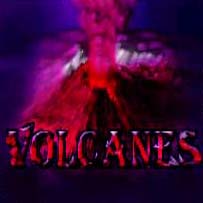
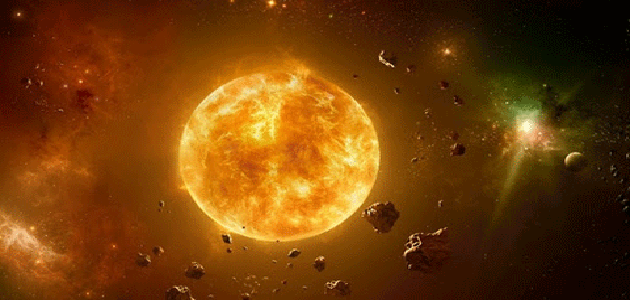

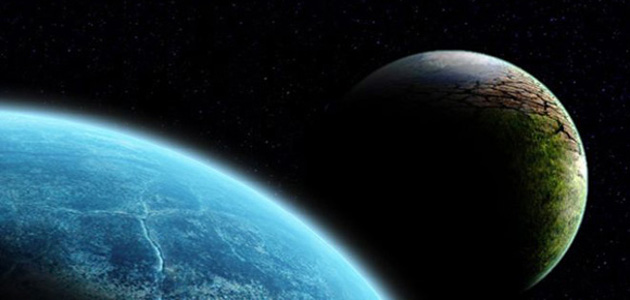










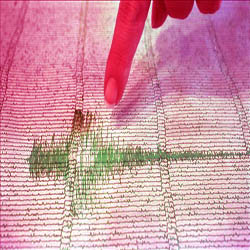
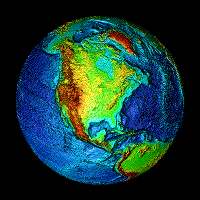


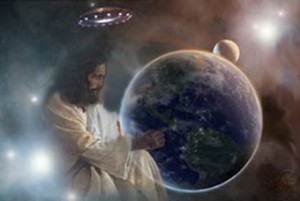










una hna de africa susan waigwa dice:el miercoles 18 de setiembre alrededdor de las 6 de la mañana,esto fue dado en las noticias en las estaciones de radio locales,”el sol estaba rojo sangre y parecia como que se estaba poniendo, en vez de levantandose”.
dice que en el mes de setiembre del 2010 tambien se dio algo parecido
vean que increible
http://starviewer.wordpress.com/2012/09/21/en-efecto-la-tierra-pierde-el-norte-los-datos-y-documental-en-video-sobre-la-reversion-geomagnetica/